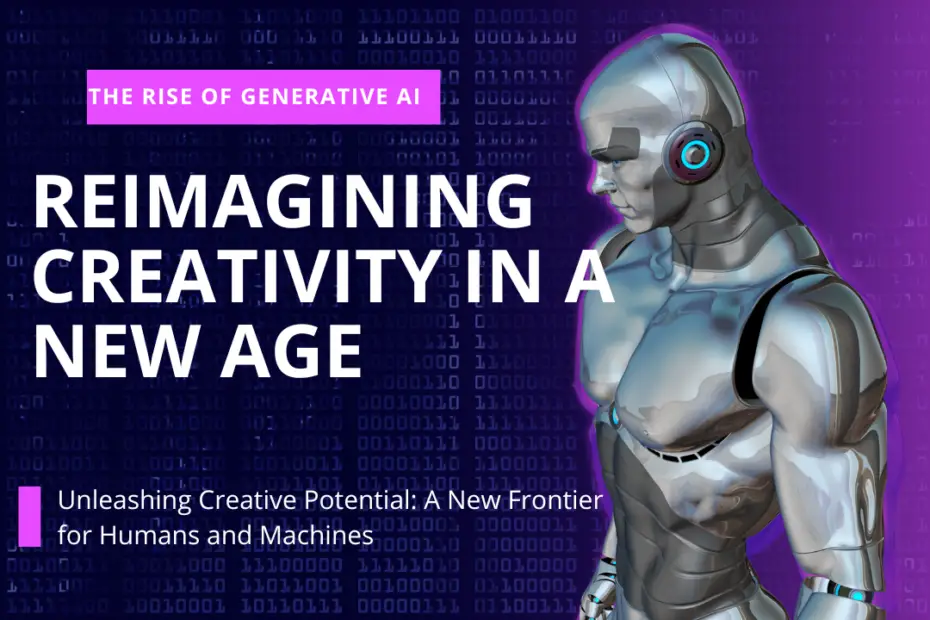The world of Artificial Intelligence is witnessing a surge in a particularly fascinating subfield: Generative AI. Unlike traditional AI models that analyze and interpret existing data, generative AI takes a revolutionary leap forward by creating entirely new content. Pioneering models like Dall-E 2 and GPT-3 are grabbing headlines for their ability to craft realistic and impressive outputs, from captivating images to nuanced text formats. This newfound capability has ignited discussions around the immense creative potential of generative AI, while simultaneously raising questions about potential ethical considerations.
Unleashing Creative Potential: A New Frontier for Humans and Machines
Generative AI presents a transformative landscape for creative expression. Take Dall-E 2, for instance. This AI model can generate photorealistic images from mere textual descriptions. Imagine describing a scene from a fantastical novel – a bustling underwater city or a majestic dragon soaring through a nebula. Dall-E 2 can translate these words into stunning visuals, empowering artists, designers, and even everyday users to bring their imaginations to life with unprecedented ease.
Similarly, GPT-3 shines in the realm of text generation. This powerful model can produce human-quality writing, crafting everything from compelling social media posts to intricate scripts. For content creators, GPT-3 can serve as a valuable brainstorming partner, generating creative ideas and variations that can fuel the human creative process.
The possibilities seem endless. Generative AI has the potential to streamline content creation workflows, democratize artistic expression by making sophisticated tools accessible to a wider audience, and foster groundbreaking collaborations between human and machine creativity.
Ethical Considerations: Navigating the Uncharted Territory
While the creative potential of generative AI is undeniable, its rise necessitates careful consideration of ethical concerns. One primary concern is bias. Generative models are trained on massive datasets, and these datasets can reflect the biases present in the real world. This can lead to the generation of content that is discriminatory or offensive. For instance, an AI trained on a dataset of news articles might perpetuate gender stereotypes in its writing.
Another major concern is the potential for misuse in spreading misinformation. The ability to create realistic-looking fake images and text can be exploited to manipulate public opinion or create deepfakes. Ensuring the responsible use of generative AI and developing safeguards against the spread of misinformation will be crucial.
The Road Ahead: A Collaborative Future
Generative AI represents a significant leap forward in the field of artificial intelligence. As we move forward, fostering a collaborative approach is key. By acknowledging the ethical concerns and working towards solutions, we can ensure that generative AI reaches its full potential as a tool to augment human creativity and drive positive change. This will involve collaboration between researchers, developers, policymakers, and the public to establish ethical frameworks and best practices for the use of generative AI.
The future of generative AI is brimming with possibilities. By harnessing its creative potential responsibly, we can unlock a new era of innovation and collaboration, shaping a world where human and machine creativity work in tandem to redefine what’s possible.
Beyond the artistic realm, generative AI promises to revolutionize various industries. Let’s delve into some specific applications:
- Drug Discovery: Generative AI can be used to design new molecules with desired properties, accelerating the process of drug discovery and development.
- Material Science: AI models can be employed to create novel materials with specific functionalities, leading to breakthroughs in fields like solar energy or sustainable construction.
- Personalized Learning: Generative AI can personalize educational experiences by tailoring learning materials and exercises to individual student needs and learning styles.
- Product Design: AI can generate new product ideas, optimize existing designs for functionality and aesthetics, and even personalize product recommendations for consumers.
These are just a few examples of the vast potential generative AI holds across diverse fields. As the technology matures, we can expect even more innovative applications to emerge.
A Glimpse into the Future: The Evolving Landscape of Generative AI
Looking ahead, several key trends will likely define the future of generative AI:
- The Rise of Explainable AI (XAI): XAI methods will be crucial for understanding how generative models arrive at their outputs, fostering trust and mitigating bias.
- Human-in-the-Loop Systems: The future may see a rise in collaborative systems where humans and AI work together, each leveraging their strengths. Humans can provide creative direction and ensure ethical considerations, while AI handles the heavy lifting of content generation.
- Democratization of Generative AI: With advancements in cloud computing and user-friendly interfaces, generative AI tools will become more accessible to a broader range of users, further accelerating innovation across various fields.
The rise of generative AI marks a paradigm shift in our relationship with technology. As we move forward, embracing this technology with a critical and responsible approach will unlock a future where human and machine creativity work in harmony to solve complex problems and shape a more innovative and imaginative world.

